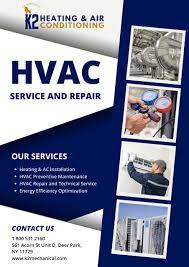Air conditioning systems are essential for maintaining comfort in homes and businesses, especially during the hot summer months. However, like any mechanical system, they can experience issues that require repair. Understanding the steps involved in air conditioning repair services can help homeowners and business owners navigate the process more effectively. This guide outlines the key steps to take when facing air conditioning problems, ensuring a smooth repair experience.
Step 1: Identify the Problem
Common Symptoms of AC Issues
Before calling for air conditioning repair services, it’s crucial to identify the symptoms of the problem. Here are some common signs that indicate your AC may need repair:
- Inadequate Cooling: The system runs but fails to cool the space effectively.
- Strange Noises: Unusual sounds such as grinding, squeaking, or hissing may indicate mechanical issues.
- Frequent Cycling: The unit turns on and off frequently without reaching the desired temperature.
- Water Leaks: Water pooling around the unit or dripping from vents can signal drainage issues.
- Bad Odors: Foul smells can indicate mold growth or electrical problems.
Step 2: Perform Basic Troubleshooting
Before contacting a professional, try some basic troubleshooting steps to see if you can resolve the issue:
1. Check the Thermostat
- Ensure that the thermostat is set to the cooling mode and at the desired temperature.
- Replace batteries if it’s a battery-operated model.
2. Inspect Air Filters
- Check the air filters for dirt and debris. Clogged filters can restrict airflow and reduce cooling efficiency.
- Replace or clean filters as needed.
3. Examine Circuit Breakers
- Check the circuit breaker panel to ensure that the AC unit’s breaker hasn’t tripped.
- Reset the breaker if necessary.
4. Clear Debris
- Inspect the outdoor unit for debris, such as leaves or dirt, that may obstruct airflow.
- Clear any obstructions to improve efficiency.
Step 3: Call a Professional
If basic troubleshooting does not resolve the issue, it’s time to call for professional air conditioning repair services. Here’s what to consider:
1. Choose a Reputable HVAC Technician
- Research local HVAC companies and read reviews to find a reputable technician.
- Ensure the technician is licensed, insured, and experienced in air conditioning repair.
2. Request an Estimate
- Contact the technician to explain the symptoms and request an estimate for the repair.
- Some companies may offer free estimates, while others may charge a service fee.
Step 4: Schedule the Repair
Once you’ve selected a technician, schedule a time for the repair. Here are some tips for the appointment:
1. Prepare Your Home
- Clear the area around the indoor and outdoor units to provide easy access for the technician.
- Ensure pets are secured and out of the way during the repair.
2. Be Available for Questions
- Be present during the repair to answer any questions the technician may have about the system’s history or symptoms.
Step 5: Understand the Repair Process
During the repair, the technician will typically follow these steps:
1. Diagnostic Assessment
- The technician will conduct a thorough inspection of the air conditioning system to identify the root cause of the problem.
2. Discuss Findings
- After the assessment, the technician will explain the findings and recommend necessary repairs.
- They should provide a detailed breakdown of the costs involved.
3. Perform Repairs
- The technician will carry out the agreed-upon repairs, which may include:
- Replacing faulty components (e.g., capacitors, compressors).
- Cleaning coils and filters.
- Fixing refrigerant leaks.
- Repairing or replacing the thermostat.
4. Test the System
- After repairs are completed, the technician will test the system to ensure it operates correctly and efficiently.
- They may also check for any lingering issues that could affect performance.
Step 6: Follow-Up Maintenance
After the repair, consider scheduling regular maintenance to prevent future issues. Here are some maintenance tips:
1. Regular Filter Changes
- Change air filters every 1-3 months to ensure optimal airflow and efficiency.
2. Annual Professional Maintenance
- Schedule an annual maintenance check with a professional technician to inspect and tune up the system.
3. Monitor System Performance
- Keep an eye on the system’s performance and be aware of any unusual symptoms that may arise.
Conclusion
Understanding the steps involved in air conditioning repair services can empower homeowners and business owners to address issues effectively. From identifying problems and troubleshooting to calling a professional and scheduling repairs, being informed can lead to a smoother repair process. Regular maintenance is crucial for extending the life of your air conditioning system and ensuring optimal performance. By following this guide, you can ensure your air conditioning system remains reliable and efficient for years to come.
